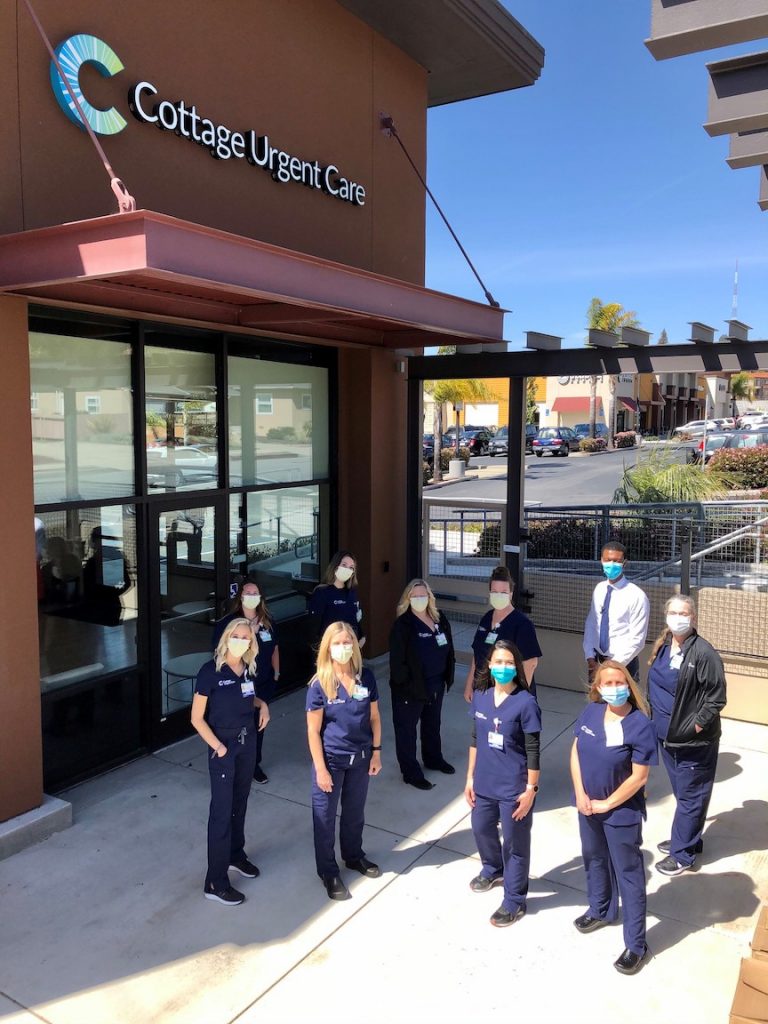Hospitals cope with staffing shortages
IN THIS ARTICLE
- Health Care & Life Science Topic
- Madeleine Benn Author
By Madeleine Benn Thursday, April 6th, 2023

About 1-in-5 healthcare workers quit their job during the COVID-19 pandemic, according to a study from the U.S. Bureau of Labor Statistics.
But, despite common belief, the nursing shortage is actually not a symptom of the COVID-19 pandemic. Rather, it had been a creeping phenomenon for several decades now.
The pandemic only quickened the process.
“We were seeing staffing challenges emerge as a critical issue before COVID and the pandemic has definitely exacerbated the challenge,” Ron Werft, president and CEO of Cottage Health, told the Business Times.
As a state, California currently sports approximately 8.2 nurses for every 1,000 patients, according to Nurse Journal.
This puts the state at a below-average ranking for the rest of the country where the average is 9.19 nurses for every 1,000 patients and situated at 12th in care, just ahead of Washington and behind Alaska.
As nurses continue to leave the healthcare industry in droves, for other positions within the industry, such as traveling nurses, into retirement or out of the business altogether, hospitals are scrambling to keep their staff fully equipped, well-trained and willing to stay for the long haul.
Across the South Central Coast, the health system strains against these statistics to keep local hospitals up to snuff.
“Hospitals across the nation, as well as local facilities, are experiencing a healthcare worker shortage,” said Sue Andersen, president and CEO of Arroyo Grande Community Hospital and Marian Regional Medical Center.
One way Marian deals with this is by actively partnering with programs to fill its missing workforce.
“We have proactively partnered with both Allan Hancock College and Cuesta’s nursing programs to recruit and train nurses and other healthcare workers. We are actively hiring new nurses and placing them in our Nurse Residency Program,” Anderson added.
Cottage has similar programs in place with additional local colleges such as CSUCI, Santa Barbara City College, Westmont College and other health systems.

According to the U.S. Bureau of Labor Statistics, around 195,400 spots for registered nurses are projected to open between 2021 and 2031.
Meanwhile, the Health Resources and Services Administration reports that in San Luis Obispo, Santa Barbara and Ventura counties, there is a health professional shortage area across several disciplines including primary care, dental health and mental health.
Another issue is housing.
One measure Cottage has taken to keep employees happy and hired is to provide local housing at one-third and one-fourth market cost with special financing available for their workers.
The housing program is known as Bella Riviera and is composed of 81 homes that have been built over the last twelve years.
Regional housing costs present a sore spot for Tenet Health Central Coast as well.
“The biggest hiring obstacle for any local company is the cost of living in San Luis Obispo County. For example, the cost of living in the Central Valley compared to the coast is significant,” Robert Cook, Chief Nursing Officer at Twin Cities Community Hospital in Templeton, told the Business Times. “Retention at our hospitals is actually pretty good in context, but people still retire and move on for a wide variety of reasons that are not related to dissatisfaction.”
But there’s the added complexity of traveling nurses.
With companies that offer hefty signing bonuses and higher hourly rates, sometimes up to $150 per hour, nurses are making the jump toward the traveling nursing sector.
According to Werft, about 20% to 25% of staffing hours are provided by travel agencies.
“We have 96 travelers across the board, in nursing and non-nursing positions. We have 4,000 employees overall, but in those clinical areas, those 96 represent about 10% of our clinical staffing,” said Werft.
He also explained that while travelers can make hiring difficult for some hospital systems, Cottage tends to see the traveling industry as a recruitment tool, as many of their travelers eventually opt to relocate and permanently work for Cottage Health Systems.
Cook would agree.
“Traveling nurses are generally wonderful for positions that need to be filled. Nearly every hospital utilizes them to a degree and, as a group, they are highly trained, experienced and skilled,” Cook said.
He added, “They are called ‘travelers’ for a reason, and the reality is that we are community hospitals that do best by hiring people permanently where we can. Sometimes, traveling nurses decide to stay and we have been able to transition them into permanent staff, partly because this is a beautiful place to live and a great place to work, but traveling nurses generally choose to be travelers because they like that lifestyle.”
As for funding to maintain competitive pay, a figure that has jumped 250% in the last three years, and often as a result of traveling nurses, this may soon peter out.
At the beginning of the pandemic, with case counts rising and deaths piling up, public health departments received federal credits to keep hospitals operational and build out their infrastructure. But as sympathetic public sentiment dwindles post-pandemic, hospitals fear budget cuts will put the healthcare worker shortage boldly in the forefront.
California health officials noted that over half of the hospitals in the state reported unsustainable or negative profit margins even before the pandemic. This only worsened through the crisis as the state’s total hospital expenses rose 15% in just a single year.
“In addition to our nursing program, we have developed Physician Residency Programs at Marian Regional Medical Center for both family medicine and obstetrics/gynecology,” said Andersen. “These programs were developed to address the shortage of primary care doctors. Through these programs, we aim to recruit, train and develop new physicians to support our Central Coast communities.”
It is estimated that in some parts of the country, nearly 40% of healthcare workers boast less than two years of professional experience, a number that is nearly 10% higher than levels prevalent before 2019 – something that can hinder the industry in the future.
Since the emergence of the COVID-19 pandemic, however, a majority of states created dashboards to keep the public apprised of case numbers and hospitalization statistics in addition to vaccine data collection and contact tracing or disease exposure.
With these programs already in place, different and future disease outbreaks won’t blindside the health system as much.
That doesn’t mean that hospitals and other healthcare facilities can afford to not be as proactive as possible when it comes to attracting and retaining talent.
email: [email protected]









